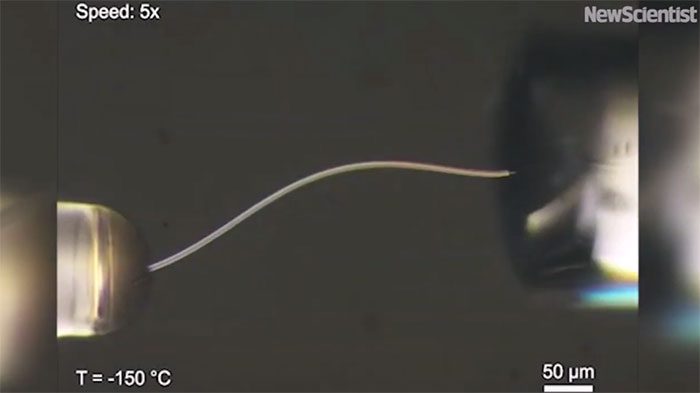Experts have created ice fibers with a diameter of just a few micrometers that exhibit high elasticity, capable of being bent into a circle without breaking.
Most ice is very hard, brittle, and difficult to bend. Theoretically, ice has a maximum elastic deformation of about 14% to 16.2%. However, in reality, the maximum elastic deformation ever measured is less than 0.3%. This is because ice crystals have structural defects that increase brittleness.
A research team led by Limin Tong at Zhejiang University aimed to create ice with as few structural defects as possible to enhance its elasticity. Their new study was published in the journal Science on July 9.
First, they introduced water vapor into a small chamber maintained at a temperature of -50 degrees Celsius. An electric field in the chamber attracted water molecules to a tungsten needle. There, they crystallized to form nanofibers with a diameter of just a few micrometers.
The researchers further cooled the ice by lowering the temperature to between -70 degrees Celsius and -150 degrees Celsius. They then measured the elastic deformation of the ice fibers and discovered that they were more elastic than any other ice structure previously measured, with some fibers being able to bend almost into a circle. All of them subsequently returned to a straight fiber form.
“Previously, the largest elastic deformation of ice observed through experiments was about 0.3%. Now, the elastic deformation of these ice nanofibers reaches up to 10.9%, making them much more flexible than any ice type ever measured,” Tong stated.

Pressure on the bent part of the fiber may have transformed the ice.
When Tong and his colleagues closely examined the ice fibers, they found signs of a second, denser form of ice existing alongside the more common type found in most fibers. The pressure on the bent part of the fiber may have transformed the ice. The research team noted that this could pave the way for a new method to study phase transitions in ice.
The nanofibers have extremely high transparency, making them suitable for light transmission, but the temperature requirements pose significant challenges. Therefore, their primary application currently is to aid research in ice physics at a small scale.




















































